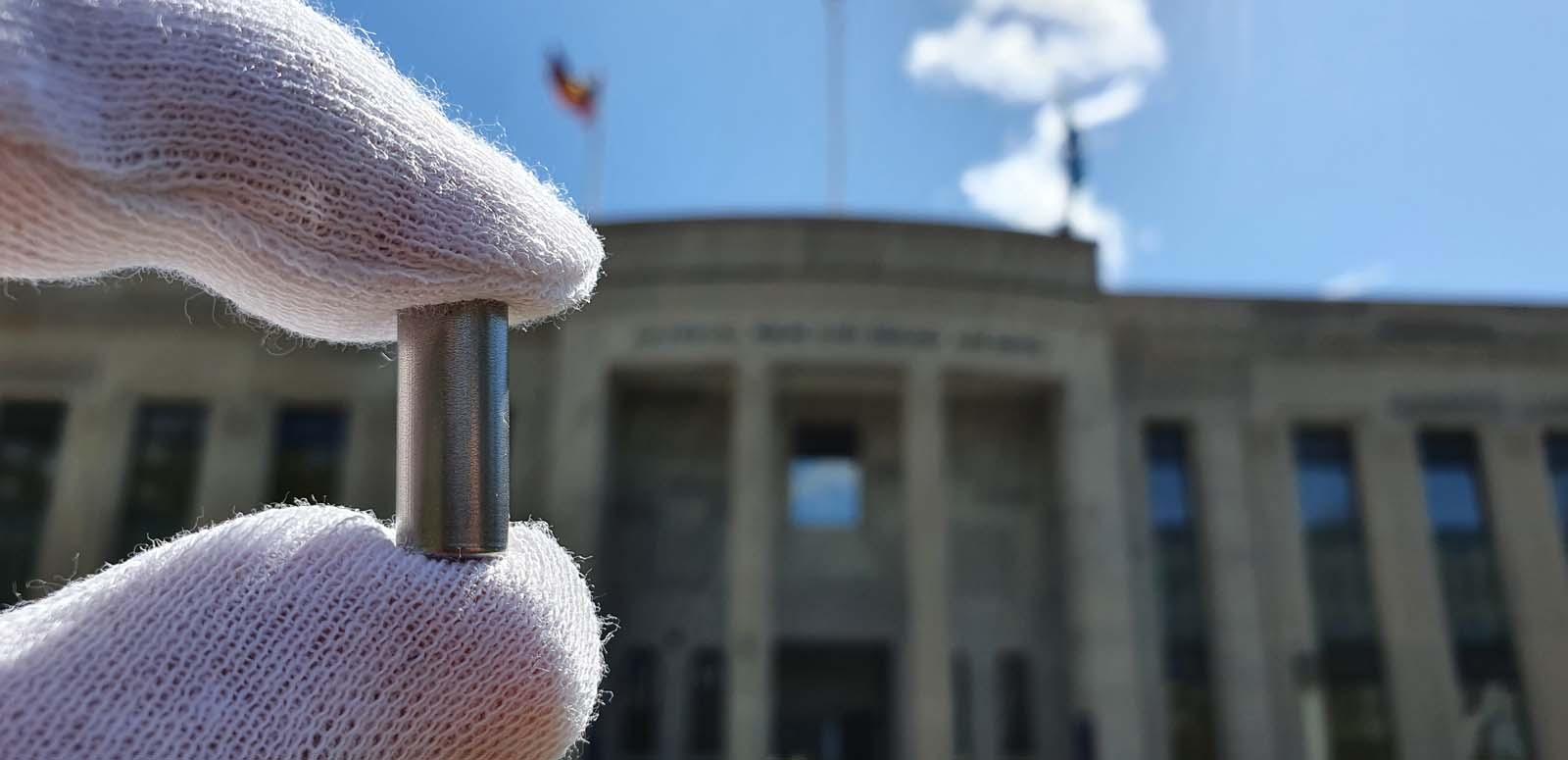

Cathy Freeman's golden moment now preserved on synthetic DNA
Media Release: Cathy Freeman's golden moment now preserved on synthetic DNA
Published 25 September 2020
- National Film and Sound Archive of Australia and Olympic Foundation for Culture and Heritage partner to store key moment in Australian sporting history using ground-breaking DNA technology.
- Sydney Opera House joins the celebration with a special projection of the Sydney 2000 race on its sails.
The National Film and Sound Archive of Australia (NFSA) and the Olympic Foundation for Culture and Heritage (OFCH) today announced that Cathy Freeman’s gold medal win at the Sydney 2000 Olympic Games has been preserved for future generations using an innovative, sustainable, long term storage technology: synthetic DNA.
The announcement takes place on the 20th anniversary of the 400-metre final, which Freeman ran in 49.11 seconds on 25 September 2000. She became the first Aboriginal person to win gold in an individual event at the Olympic Games.
The footage was projected on the sails of the Sydney Opera House, to mark both Freeman’s historic achievement, and its preservation on DNA.
The project is a world first, using emerging DNA data storage technology to preserve moving image for archival purposes. It is also the first Australian video ever to be encoded on DNA.
The master copy of the race, owned by the OFCH, is stored in Switzerland on magnetic tape - an obsolete technology prevalent 20 years ago. Once digitised the resulting file occupies 1 gigabyte, but it will now be kept in microscopic synthetic DNA for thousands of years. The DNA copy will be stored in a vial the size of a AAA battery, which can be put on a shelf for thousands of years without additional maintenance.
NFSA Chief Executive Officer Jan Müller said: ‘Cathy Freeman’s triumph at Sydney 2000 was a key moment in Australian sporting history. It brought Australians of all ages and backgrounds together in celebration, and it was viewed by billions of people around the world. We see this moment as part of ‘Australia’s DNA’, ideal to be preserved in actual DNA and become Australia’s first usage of this new technology.
‘As an international leader in audiovisual preservation, the NFSA is at the forefront of innovation. Data storage and management are the biggest challenges for the archives of the future, so we must investigate efficient, reliable and scalable technologies. The world’s ability to store digital data is not keeping pace with its exponential growth, and synthetic DNA is one of the new solutions currently being developed.
‘We wanted to test its revolutionary potential to store large volumes of data securely, for very long periods of time, in an environmentally sustainable manner. With synthetic DNA we could store the NFSA collection six times over in matter the size of a matchstick, so it’s a very exciting prospect.’
OFCH Head of Heritage, Yasmin Meichtry said: ‘As the custodian of large digital collections and with the growing amount of images produced at every Games edition – more than 7,000 hours planned for Tokyo 2020 – as well as the evolution towards 4k and 8k, data storage will also soon become an issue for the IOC. We are therefore always looking for ways to improve technologies and test innovations.
‘Synthetic DNA storage is the avant-garde technology that could lead to cost efficiencies and more sustainable and environmentally responsible ways to increase the capacity of our data storage. We are thus thrilled to partner up with NFSA in experimenting that ground-breaking scientific knowledge, using one of our emblematic Olympic moments’.
A mini-documentary about the DNA preservation project is available on our YouTube channel (http://bit.ly/NFSADNADocumentary) and the NFSA website: nfsa.gov.au/DNA.
Footage and stills from projection on the Sydney Opera House are available for media use. Imagery is supplied on the understanding it will be used solely in conjunction with editorial around the NFSA/OFCH DNA preservation announcement. It is intended for one time use only and should not be held on file for future editorial purposes. Please credit: Courtesy National Film and Sound Archive of Australia/OFCH.
Interviews with NFSA CEO Jan Müller and Project Manager Ross Garrett are also available. For interviews, footage or stills, please contact Gabrielle Wilson, gabrielle@thepresssociety.com.au or +61 (0) 433 972 915.
ABOUT DATA STORAGE ON SYNTHETIC DNA
Audiovisual content is subject to fast technological obsolescence. From videotapes to current digital files, all formats become obsolete. Audiovisual archives must transfer their collections on to new technologies to ensure their survival and accessibility.
While digital information is stored using a series of zeros and ones, DNA information is based on four nucleotide bases: adenine (A), thymine (T), guanine (G) and cytosine (C). The order/sequence of these determines the information stored in a DNA strand. In order to encode digital data such as video or audio on DNA, the digital zeros and ones are converted into DNA’s A, T, G and Cs.
Synthetic DNA offers great information storage density, allowing to fit the content of the largest of today’s data centres, in one gram of DNA. The encoded information can be stored for thousands of years, without the need for active maintenance.
The National Film and Sound Archive of Australia acknowledges Australia’s Aboriginal and Torres Strait Islander peoples as the Traditional Custodians of the land on which we work and live and gives respect to their Elders both past and present.